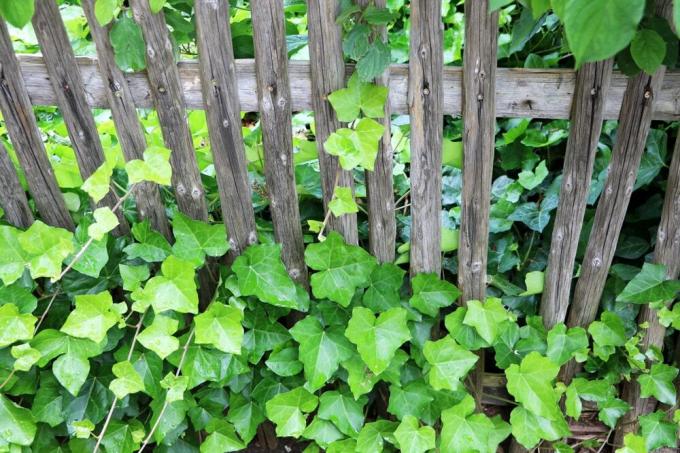

Table of contents
- How do you de-sharpen correctly?
- Which plants are pruned?
- What to look out for
- Conclusion
De-sharpening means pinching or cutting off shoot tips, especially in young plants. It promotes bushier growth and stimulates branching. We will show you how to proceed correctly when de-sharpening.
How do you de-sharpen correctly?
- With young plants, where the shoots are still soft, it is best to take the fingernails of your thumb and forefinger and pinch off the tip of the shoot.
- For thicker shoots, use small but sharp scissors to cut them off!
- With bonsai, regular pinching of the trees is necessary to maintain the special branches. There are special tools for this.
Which plants are pruned?
- seeded window box plants – Petunias, geraniums and co. grow much more bushy and produce many more flowers if they are pruned properly.
- Perennials – here, too, one wants to achieve more flowers. But you can also use it to flower postpone or lengthen, depending on when pinching.
- pot plants – are sharpened so that they branch out
- summer flowers – also become bushier as a result of the pruning and simply produce more shoots (dahlias, black-eyed Susanne, fuchsias...) Plants like the fuchsia, where a rich branching is to be achieved, can be pruned a little every four weeks.
- trellis fruit – here, when pruning, all annual shoots that grow from the side buds are shortened.
- grape vines – Early pruning of the shoots stimulates increased avarice instinct formation. These shoots are to be pruned again later. This creates a well-exposed leaf mass, which is important for fruit development.
- tomatoes – is sharpened so that the plants do not grow endlessly and put all their strength into length growth. It is pointed out when 5 to 6 infructescences are formed. For greenhouse tomatoes, 7 trusses are good.
- cucumbers – Cucumbers are pruned at a height of 2 meters, pickled and peeled cucumbers do not have to be pruned.
What to look out for
Pruning is particularly important for plants that are later to bear fruit. Fruit trees fall under this category, for example, as do tomatoes. Another term for de-sharpening is pinching.
De-sharpening is often necessary, especially with young plants. Nature initially tells them to grow upwards and reach a certain height in order to assert themselves against older plants and to secure a location. This natural process is interrupted by de-sharpening. The plant is forced to produce new shoots, which then branch out.
Proper pinching is for perennial trees and shrubs necessary to lay the foundation for a successful harvest at a young age. It can also be necessary for flowers. Here, too, a bushy growth habit and lush flowering is achieved by pinching.
You can use your fingernails to trim young, tender plants. Otherwise, use scissors. Older plants can also be trimmed with scissors. This can be normal household scissors or, in the case of woody plants, a garden or garden scissors Rose Scissors.
The de-pointing is done up to a length of about 4 eyes. The sprouting takes place after the pinching out of the underlying, sleeping eyes.
Conclusion
It is favorable for many plants if they are pruned. They grow bushier and produce more flowers. However, one should not sharpen wildly. You always have to think about what you want the plant to look like in the end and what is the best way to achieve that.
 garden editorial
garden editorial I write about everything that interests me in my garden.
Learn more about E for ivy

Iron deficiency in plants: natural iron fertilizers and home remedies
All plants need more or less iron for photosynthesis, which is usually already present in good soil. If there is an iron deficiency, the leaves usually turn yellow and the plants hardly grow any more. Then iron supplements, also as home remedies, must be counteracted.

Chestnut tree, sweet chestnut tree - care instructions
He gives us tasty chestnuts in autumn and winter. In summer, the sweet chestnut tree adorns the garden and balcony with its slender silhouette and a densely leafy crown. Properly cultivated, a chestnut tree will give you and future generations much pleasure. These care instructions explain in a compact and practical way how to care for a sweet chestnut.

Efeutute, Epipremnum aureum: care from A - Z
The ivy or Epipremnum aureum is one of the most popular houseplants par excellence and is also ideal for people without a green thumb. You can find out how to care for the plant from A - Z here.

planting ivy | 13 tips on soil, setting & planting
Whether as a privacy screen, climbing wall or terrain greening or ground cover - ivy always works. With species-appropriate care, this evergreen classic will delight gardeners for years with its numerous advantages. In order for the plant to thrive particularly well, the gardener should take these tips into account.

How fast does ivy grow? | Accelerate growth effectively
Ivy (Hedera helix) is a true climber that climbs up walls and house walls without any problems and can have a very decorative effect. Once it has taken root, it can literally overgrow large areas in a very short time. You can literally watch him grow.

Hydrochloric acid against weeds, bamboo and ivy | Are acids allowed?
Weeds are annoying. Removing it is one of the most tedious and unpleasant jobs in the garden. Of course, one thinks about a radical solution to the problem. However, using hydrochloric acid against weeds is not a good idea and is not permitted.
